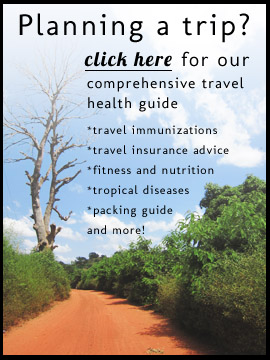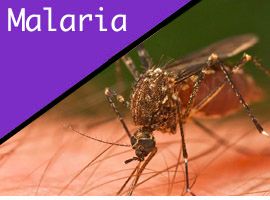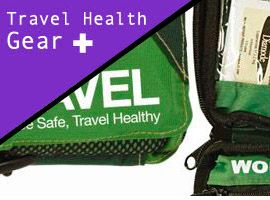Look at that little cluster of methicillin resistant Staphylococcus aureus (MRSA) bacteria. A couple of microscopic purple pom poms. No big deal. Right? No. The bacteria known as MRSA is responsible for a large number of serious infections, cases of which are potentially fatal.
Staph bacteria are quite common. The bacteria can be found on our skin and in our nose, for example. But the bacteria is also responsible for a number of infections, including skin infections and respiratory diseases like sinusitis. Like most bacteria, Staphylococcus aureus can be treated with antibiotics. However, MRSA has evolved to resist antibiotic treatment.
In this post, we will talk about transmission of MRSA, signs and symptoms, prevention tips specifically geared for travel, and treatment options.
How can you get infected with MRSA?
In the medical community, two forms of MRSA are discussed: community-acquired and hospital acquired. Community-acquired refers to MRSA that has typically been transmitted in a closed setting with lots of people. For example, a gym locker room or a college dormitory. Hospital acquired MRSA is as straightforward as it sounds – it proliferates in hospitals in clinics and it is this form of MRSA that is often responsible for fatal cases as many patients already have a compromised immune system.
Healthy adults in the general public are rarely at risk of MRSA infection, but if you frequently come in contact with concentrated groups of people, you could be at risk, especially if the setting is an athletic facility or a medical center. Crowded public transportation could also present a risk and should be avoided if possible, especially if you are already at risk (for example, you have a weakened immune system or another chronic medical condition like diabetes).
As for the actual physical transmission of MRSA, it can happen through extended skin-to-skin contact, through an open cut or wound, or from other contaminated items, like a used towel or a hypodermic needle.
Signs and symptoms
Some people are able to carry the MRSA bacteria without symptoms manifesting. This can be true of people who are generally healthy and in cases where the bacteria is isolated. It is when more severe secondary infections occur that things can get ugly. Generally, if this happens, symptoms escalate quickly.
In a roughly 72 hour time period, MRSA can take up residence in body tissue and start posing some serious problems. Small red bumps may appear and eventually turn into infected, pus-filled boils (what you wanted to hear, I’m sure). If the infection stays on the skin level, or in the soft tissue, the MRSA can often be treated even without the use of front-line antibiotics. If the infection makes its way into vital organs, however, treatment becomes much more difficult and the mortality rate goes up significantly.
Diagnosis and treatment should be sought immediately if symptoms emerge – early treatment is critical for MRSA, especially if you have an existing medical condition or a weakened immune system.
What can you do as a traveler and what are the chances of getting MRSA?
If you are in good health, your risk of catching a serious MRSA infection is low. That said, there are a few things to keep in mind as a traveler. If you need to go to a medical facility, ask for recommendations from locals or officials from your own country. You can always call your embassy to ask which clinics they recommend in a certain country. You are more likely to have a run-in with MRSA in medical facilities that are disorganized and unhygienic.
When it comes to public transportation, try to avoided overly crowded forms of it. If you have to pay a little bit extra for more space, so be it. None of this is is to say that you should avoid taking public transportation, mind you. But the chances of MRSA infection are greater in such settings, so it’s best to be aware, and if you are traveling with a health condition or a compromised immune system, you may want to consider alternate ways for getting around.
At the end of the day, MRSA infection is unlikely for most travelers and it should not be something that you are preoccupied with as you plan your trip. Take all of your normal precautions, which should include frequent handwashing and the cleaning and bandaging of any open wound, and if you need to go to a medical facility, make sure it is one that is kept clean.
For further reading on MRSA, we recommend this article on Gadling and this from the CDC.












{ 0 comments… add one }